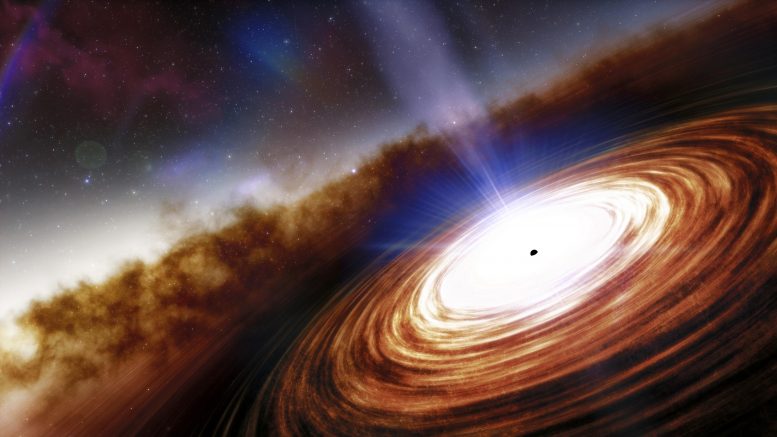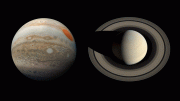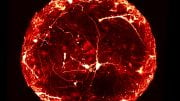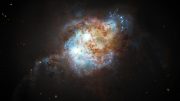
Artist’s impression of a quasar. Credit: Artist illustration: NOIRLab/NSF/AURA/J. da Silva
Scientists have observed the X-ray emissions of the brightest quasar ever recorded in the past 9 billion years of cosmic history. This quasar, known as SMSS J114447.77-430859.3 or J1144 for short, provides new insights into the inner workings of quasars and their interaction with the surrounding cosmos. Their findings are reported in the Monthly Notices of the Royal Astronomical Society.
Situated in a galaxy approximately 9.6 billion light years away from Earth, somewhere between the Centaurus and Hydra constellations, J1144 possesses immense luminosity, shining with a brightness 100,000 billion times greater than the Sun. This quasar’s proximity to Earth, compared to other equally luminous objects, has granted astronomers an opportunity to gain insight into the black hole powering the quasar and its surrounding environment.
The study was led by Dr. Elias Kammoun, a postdoctoral researcher at the Research Institute in Astrophysics and Planetology (IRAP), and Zsofi Igo, a Ph.D. candidate at the Max Planck Institute for Extraterrestrial Physics (MPE).
Quasars are among the brightest and most distant objects in the known universe, powered by the fall of gas into a supermassive black hole. They can be described as active galactic nuclei (AGN) of very high luminosity that emit vast amounts of electromagnetic radiation observable in radio, infrared, visible, ultraviolet, and X-ray wavelengths. J1144 was initially observed in visible wavelengths in 2022 by the SkyMapper Southern Survey (SMSS).
For this study, researchers combined observations from several space-based observatories: the eROSITA instrument on board the Spectrum-Roentgen-Gamma (SRG) observatory, the ESA XMM-Newton observatory, NASA’s Nuclear Spectroscopic Telescope Array (NuSTAR), and NASA’s Neil Gehrels Swift observatory.
The team used the data from the four observatories to measure the temperature of the X-rays being emitted from the quasar. They found this temperature to be around 350 million Kelvin, more than 60,000 times the temperature at the surface of the Sun. The team also found that the mass of the black hole at the quasar’s center is around 10 billion times the mass of the Sun, and the rate at which it is growing to be of the order of 100 solar masses per year.
The X-ray light from this source varied on a time scale of a few days, which is not usually seen in quasars with black holes as large as the one residing in J1144. The typical timescale of variability for a black hole of this size would be on the order of months or even years. The observations also showed that while a portion of the gas is swallowed by the black hole, some gas is ejected in the form of extremely powerful winds, injecting large amounts of energy into the host galaxy.
Dr. Kammoun, lead author of the paper, says “We were very surprised that no prior X-ray observatory has ever observed this source despite its extreme power.”
He adds, “Similar quasars are usually found at much larger distances, so they appear much fainter, and we see them as they were when the Universe was only 2-3 billion years old. J1144 is a very rare source as it is so luminous and much closer to Earth (although still at a huge distance!), giving us a unique glimpse of what such powerful quasars look like.”
“A new monitoring campaign of this source will start in June this year, which may reveal more surprises from this unique source.”
Reference: “The first X-ray look at SMSS J114447.77-430859.3: the most luminous quasar in the last 9 Gyr” by E S Kammoun, Z Igo, J M Miller, A C Fabian, M T Reynolds, A Merloni, D Barret, E Nardini, P O Petrucci, E Piconcelli, S Barnier, J Buchner, T Dwelly, I Grotova, M Krumpe, T Liu, K Nandra, A Rau, M Salvato, T Urrutia and J Wolf, 3 April 2023, Monthly Notices of the Royal Astronomical Society.
DOI: 10.1093/mnras/stad952









Brightest quasar in 9 billion years? Humans have been observing quasars for how long?